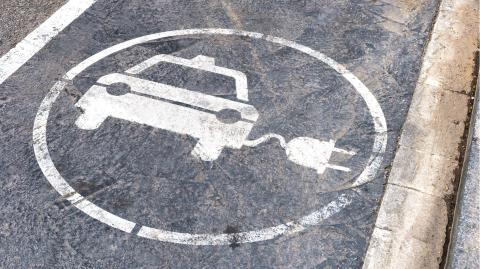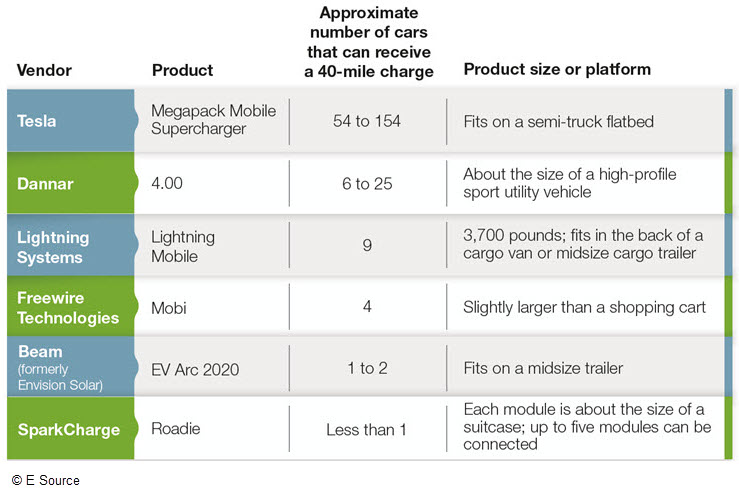
Mobile and deployable electric vehicle (EV) charging options are crucial to boosting charging resilience during natural disasters. To support our clients, we’ve been exploring the benefits of several products that can provide energy to stranded EV drivers in a natural disaster or other emergency.
No EV driver without a charge
Utilities need strategies for supporting their EV customers during a disaster-caused outage—especially as hurricanes, snowstorms, and wildfires become more intense and more frequent. In fact, some state regulators require utilities to plan for how they’ll help EV customers if grid-tied charging stations lose power.
Recently, we crafted a disaster-preparedness plan for a client, and it includes the use of mobile and deployable EV charging technologies. The charging capacities vary widely: some are as small as a suitcase and can be stashed in a tow truck, while others are flatbed-sized battery arrays and can charge scores of cars. And some offer extras like built-in solar capacity that allows the unit to self-charge. We then customized the solutions to the utility’s needs and identified preferred locations to deploy the solutions by studying traffic volume and patterns, local penetration of EVs, and EV sales forecasts for the next several years.
A review of emergency charging options
Our team of experts analyzed several technologies (figure 1), including mobile, deployable solutions designed to address a variety of outage durations and driver demand.
Figure 1: Some of the technologies available to support EV customers during a disaster-caused outage
We also investigated more-permanent solutions such as using a diesel generator to power EV equipment or developing an islanded microgrid that, while not mobile, would include local charging stations.
We found that each of the many scenarios of EV drivers needing a charge during an emergency required a different solution. Ultimately, our recommended strategy for EV charging resilience included deploying several of the battery-based solutions listed above and diesel generators. We also strongly advised the client to consider islanding a microgrid for a longer-term solution. The client is conducting extra research and will soon begin implementing our recommendations.
Ready to learn more about how we can help you navigate the world of EVs? Visit our Electric vehicles page for more information on developing an EV strategy that balances your priorities with your customer needs.
